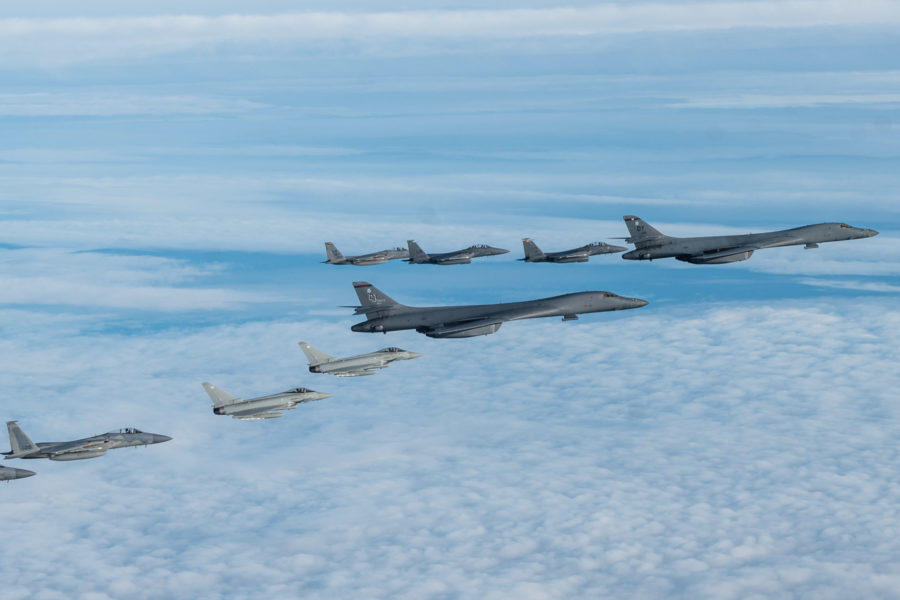Air Force Global Strike Command integrated B-52s from Minot Air Force Base, N.D., with B-1s and a host of British aircraft from RAF Fairford, England, for exercises over the North Sea on Nov. 10.
The Bomber Task Force Europe mission included a targeting activity using conventional and precision-guided munitions to strike air, land, and sea targets that practiced interoperability with coalition forces, according to a release.
B-52 aircraft from the Minot’s 5th Bomb Wing, B-1B Lancers from the 9th Expeditionary Bomb Squadron, and British aircraft including Royal Air Force Eurofighter Typhoon FGR4 aircraft, F-15D Eagles, F-15E Strike Eagles, and KC-135 Stratotankers participated in the mission.
In August, B-2s from Whiteman Air Force Base, Mo., similarly deployed to Iceland for an integration exercise with NATO partners, including Norway, over the North Sea. U.S. Air Forces in Europe-Air Forces Africa commander Gen. Jeffrey L. Harrigian explained the importance of North Sea exercises to journalists at the Air Force Association’s Air, Space & Cyber Conference on Sept. 21.
Harrigian mentioned doing “a lot of work with the Norwegians continuing to refine our … tactics, techniques, and procedures and in terms of interoperability,” he explained. “Demonstrating again, the importance of what I quantify as muscle memory being built, just by the fact that they’re there and working through how we’re actually going to execute with them.”
Harrigian underscored the communications perspective of missions in the North Sea and on ranges off the coast of the United Kingdom.
“[We] leverage some of the inherent UK capabilities to work, specifically, the interoperability and [tactics, techniques, and procedures] challenges that we know are out there,” he said.
The USAFE commander spoke about fifth- to fourth- and fourth- to fifth-generation interoperability challenges and practicing Link-16 data transmission with coalition partners in an encrypted format.
“The more you practice it, the better prepared we’ll be in the future,” he said.
Bomber Task Force rotations have brought all three U.S. bombers to the European and African theaters since 2018 to practice rapid deployment at unfamiliar airfields as well as integration with NATO allies and partners.


